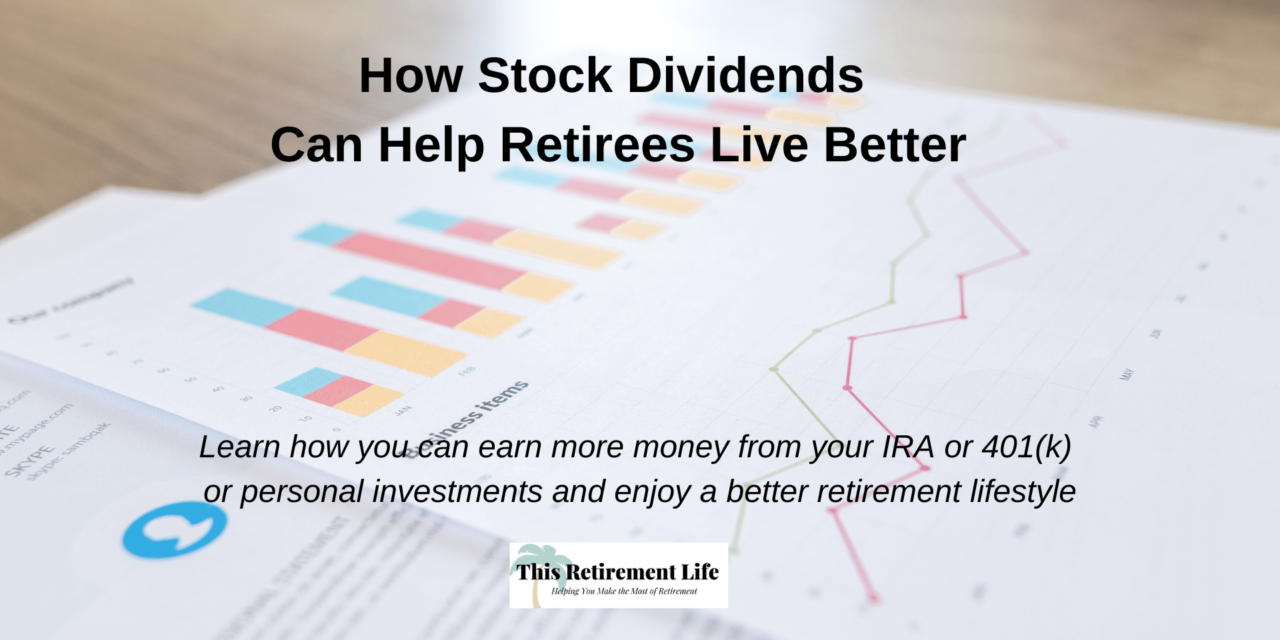No matter how much money you have saved for retirement, it won’t help you much if you can’t earn a decent income from it.
With interest rates hovering near record lows, that’s exactly the situation many retirees face today. Low rates are forcing retirees to either accept a lower standard of living or look elsewhere for income.
Let’s say you are fortunate enough to have $500,000 in 401(k), IRA or other savings earmarked for retirement. If you play it safe and invest your money in today’s average one-year jumbo bank certificates of deposit (CD), which according to Bankrate.com are earning 0.44 percent as of early June 2020, you will earn a whopping $183.33 per month. Even if you lock your money up in 5-year jumbo CDs, you will only earn $254.16 per month at the current interest rate of 0.61 percent.
Good luck trying to live in retirement on that income.
Low interest rates are great for some people, such as home buyers shopping for a mortgage, but they have created real hardship for retirees and others trying to live off of income from their investments. As a result, more income-focused investors are taking a second look at another traditional stalwart of retirement income, dividends from common stocks. In this article, we will explain how dividends work and what makes them a superior choice for at least a portion of your retirement savings portfolio.
What is a dividend?
For a quick primer, dividends are money paid by companies to their shareholders, typically on a quarterly basis. Companies that are relatively young, not-yet-profitable, or engaged in rapidly growing industries may not pay dividends, but most more established and financially stable companies do. Dividends are paid from a company’s profits, and as profits rise, so do the dividends.
Why Retirees Should Invest in Dividend-Paying Stocks
Here are some of the attributes that make stock dividends appealing to income-seeking retirees:
- Dividends can provide higher initial income. Compared with bank CDs, Treasury securities, and even many of today’s bonds, stock dividends may generate greater cash flow and provide you with a better retirement lifestyle. The average dividend yield on U.S. stocks that make up the Standard & Poor’s 500 Index is just shy of 2.0 percent. That may not sound high, but it sure beats those bank CD rates cited above. If you invest your $500,000 retirement portfolio in the S&P 500, your dividend income (expressed on a monthly basis) would be $816 per month, way better than those CDs. What’s more, many stocks pay higher dividends. We will discuss some examples later, but it is possible in today’s market to earn two to four percent income from a stock portfolio without taking excessive risk, and even higher if you are a bit more daring with your money. Of course, the principal in bank CDs is guaranteed while stock prices are not, but if you are retired and needing more income, choosing dividend-paying stocks over low-interest CDs may be a risk worth taking.
- Dividends can increase over time, allowing retirees to offset future increases in the cost of living. Another problem with interest income from bank CDs and bonds is that it is typically paid at a fixed rate. If they promise you 1.5 percent, you will get 1.5 percent each year until the investment matures, no more and no less. Is that a good deal? No, because the cost of living keeps going up. To show how inflation affects us, just compare your monthly grocery bill today with what you paid 10 or 20 years ago. How would you like it if the Social Security Administration announced that they were no longer going to give any cost-of-living increases? That is essentially what you are doing when you tie up the bulk of your retirement money in long-term fixed-rate CDs and bonds.
“How would you like it if the Social Security Administration announced that they were no longer going to give any cost-of-living increases? That is essentially what you are doing when you tie up the bulk of your retirement money in long-term fixed-rate CDs and bonds.”
By contrast, dividends from stocks have an impressive track record of growing over time, since dividends over the longer term track a company’s earnings (profits). During the past century, the average annual dividend growth rate on the S&P 500 stock index has been 5 percent, far ahead of the 3.2 percent average annual inflation rate over a similar time period. Imagine how elated we would be if the government announced that our Social Security checks were going to go up by an average of 5 percent per year! While the future might be different, historically that is what you got when you relied on stock dividends for income. You not only kept up with inflation but your income outpaced it. The long-term consequences of having a growing stream of income are significant. To illustrate the point, someone retiring at 65 and investing solely in dividend-paying stocks could potentially see their annual income double by the time they reached age 80. This is based on past performance, which is not necessarily indicative of future results.
- Your principal can grow over time. Another benefit of investing a portion of your retirement investment portfolio in dividend-paying stocks is that historically stock prices tend to rise over the longer run. The short-term performance of stocks can be unnerving, with wild fluctuations from day to day and sharp drops, but if you look at the longer-term trends, stocks of healthy companies tend to go up in value over time. As a result, you can potentially not only enjoy a growing stream of attractive income during your retirement, but based on historical results, odds are good that your principal amount will also grow, although future results are never guaranteed. This means you might have more money to help pay for end-of-life healthcare expenses, leave to charity, or pass along to your heirs.
Examples of successful dividend-paying companies
Let’s look at three American companies that are popular with retirees due to their dividends. All three are among 66 elite stocks listed as Dividend Aristocrats, stocks that are included in the S&P 500 and have raised dividends for at least 25 consecutive years. They are among the safest choices for retirees looking for income. This is not a recommendation to buy these stocks, but simply an illustration to help you better understand the benefits of investing some of your retirement savings in dividend-paying stocks.

The first is Johnson & Johnson (NYSE: JNJ). This healthcare international behemoth has consumer brands including Neutrogena, Listerine and Tylenol, but it’s real strength is with pharmaceuticals and supplies targeted to hospitals and physicians. Johnson & Johnson has paid its dividend for 59 consecutive years and has raised the dividend every year for the past 25 years, according to Dividend.com. The company’s dividend has nearly doubled during the past decade. The current dividend yield is 2.80 percent. Those who bought JNJ stock in years past for its dividend have done very well. If you bought 1,000 shares of JNJ at the beginning of 2005 for $63,420, it would today be worth $147,300, according to Johnson & Johnson. That means your principal more than doubled during that 15-year holding period. The first year, back in 2005, you would have earned $1,270 in dividends from your JNJ stock, but last year (2019) you would have earned $3,750 in dividends. In other words, while your principal doubled in value, your dividend tripled!

Our next stock is a company everyone knows, Walgreens, the drugstore giant. The full name of the company is the Walgreens Boots Alliance (Nasdaq: WBA). The company has more than 18,000 stores globally, operating under the names Walgrees, Duane Reade, and Boots. Their business may not seem exciting but they have performed well over the years, including paying consecutive dividends every quarter for the past 87 years, with 44 years of uninterrupted dividend increases. Recently, Walgreens’ stock paid an appealing 4.34 percent dividend, more than double the average yield on the S&P 500 stock index.

Another popular dividend stock is Realty Income (NYSE: O), a real estate invesment trust (REIT). It owns a portfolio of 6,500-plus commercial properties, from which it collects rent from nationally known retail tenants like Dollar General, Walgreens, and 7-Eleven. It is unusual because it pays its dividend monthly rather than quarterly. It has paid a dividend, without fail, for 598 months, which is nearly 50 years. Recently, the stock’s annual dividend yield was a handsome 4.44 percent. Since the stock was listed on the New York Stock Exchange in 1994, Realty Income’s dividend has averaged an annual growth of 4.5 percent, keeping its shareholders well ahead of inflation.
Comparing your dividend income vs. bank CDs
Remember the hypothetical $500,000 retirement portfolio we mentioned earlier? The one that earned only $188 per month in interest income if invested in one-year bank jumbo CDs at current rates? For discussion purposes, let’s assume you split your money equally among the three dividend-paying stocks above — Johnson & Johnson, Walgreens, and Realty Income. Want to guess what you’d earn? How about $1,602 per month! That’s a lot of extra money that can definitely help you live better! Even if bank CD interest rates double or triple from current levels, you are still well ahead from an income perspective by investing in these dividend-paying stocks. Plus, if history repeats, which is not guaranteed, your dividend income stream from these stocks will only grow over the years ahead.
“Even if bank CD interest rates double or triple from current levels, you are still well ahead from an income perspective by investing in dividend-paying stocks.”
This example is for illustration purposes only. In real life, we would never recommend investing all of your retirement money in just three stocks. You need much more diversification, which we will discuss next.
Seek professional advice before investing
Investing your life’s savings in a manner that will provide well for your future needs during retirement is a very important step. For this reason, retirees or those nearing retirement should seek professional help, such as from a Certified Financial Planner. Even if you are normally a do-it-yourself kind of investor, we recommend talking with a financial planner at least once about your retirement plan. The stakes are too high to make mistakes. When searching for a financial adviser, beware of those who are primarily product salespeople, making the bulk of their living from commissions. Instead, seek a fee-only Certified Financial Planner (or equivalent) who will act as a fiduciary, meaning he or she is legally obligated to put your interests ahead of their own when making recommendations.
Tips for investing in dividend-paying stocks
Buying dividend-paying stocks for your retirement portfolio is different from buying growth stocks when you were younger. If you select wisely, odds are good you will only rarely need to make changes to your income-producing stock portfolio in the years ahead. This is a long-term investment strategy that requires only minimal maintenance once set in place.
Here are some suggestions for making wise investment choices:
Diversity broadly. As noted above, you should never concentrate your investment money in one, two or three stocks. That can be very risky. Instead, you need broad diversification, meaning not only different companies but investments across different industries. Historically reliable dividend-paying stocks can be found in many industries, but some of the more common ones include utility companies (electric, gas, and water), banks and other financial institutions, telecommunication firms (like Verizon and AT&T), real estate investment trusts (REITs), consumer products, healthcare, and energy companies.
When buying individual stocks, adequate diversification is nearly impossible unless you are investing at least $100,000 to $250,000. A popular alternative to buying stocks, especially for smaller portfolios, is to put your retirement money into a diversified pool of stocks such as a mutual fund or exchange-traded fund (ETF). Both offer you a high level of diversification and greater safety, even if you are only investing a modest sum.
“A popular alternative to buying stocks, especially for smaller portfolios, is to put your retirement money into a diversified pool of stocks such as a mutual fund or exchange-traded fund (ETF).”
When buying mutual funds or ETFs, make sure they are “equity income” funds, meaning the portfolio is primarily equities (stocks) and that providing income is a primary objective of the fund. At least for this portion of your retirement account, steer clear of income funds where the portfolio is primarily bonds. As described above, bonds pay a fixed rate of interest that does not grow. Interest rates on bonds are near historic lows, which makes this a bad time to be investing heavily in bonds.
Many investment firms offer what they refer to as managed portfolios, similar to mutual funds and ETFs. Before putting your money into a broker’s managed portfolio, be sure to consider the costs, since some brokers charge much higher fees than the average mutual fund. Over time, high annual expenses can eat into your portfolio’s performance. Some mutual funds and ETFs provide professional oversight, meaning trained stock analysts are watching the portfolio day by day and keeping it updated. These are called managed mutual funds (or ETFs). Other funds and ETFs are tied to a stock index such as the S&P 500 and are driven by computer modeling. These are called index funds.
Stick with high quality. When we were young, we could afford to take more chances with our investment money. We could buy the latest fad stock, in hopes it just might become the next Walmart, Google or Apple and make us rich. Now that we’re either near retirement or already there, it is time to use greater care when selecting our investments. Stick with larger, well-established companies that are financially stable. A good place to start is the Dividend Aristocrats, although there are other companies outside that list worthy of consideration too. There are plenty of high-quality companies with a history of paying consistent dividends for decades, so why look elsewhere? Keep in mind that all stocks fluctuate in price, even the highest-quality ones. Don’t let short-term market dips and even bear markets unnerve you if your goal is income. This is a long-term strategy.
Never chase high yields. One of the worst mistakes you can make is to pick stocks based on those with the highest dividend yields. In this respect, stocks and bonds are similar. High-yielding bonds are usually lower-quality and riskier; the same is true for stocks. In bond circles, high-yielding bonds are often referred to as “junk bonds” and for good reason.
“One of the worst mistakes you can make is to pick stocks based on those with the highest dividend yields.”
The S&P 500 stock index is yielding just shy of two percent, so it stands to reason that although you can find stocks paying seven or eight percent, odds are good those companies have problems. Average stock yields do vary by industry. For instance, real estate investment trusts and utility companies tend to pay higher dividends than consumer-products and healthcare stocks. That’s OK, but if you are comparing several stocks within the same industry, it is usually a mistake to select one based on its dividend yield being higher than its peers. The highest-yielding stock may look appealing in the short term, but on closer examination you may discover the company is heavily in debt, no longer growing its revenue, or not earning enough profits to continue paying the dividend in the future.
In the current market scenario, you can build a high-quality, diversified stock portfolio with an average initial dividend yield between two and four percent. A well-constructed portfolio like this is likely to serve you well for many years or even decades to come. On the other hand, if you ignore this advice and build a stock portfolio based on chasing the highest dividend yields, you may be asking for trouble.
Improve your lifestyle with dividend-paying stocks
Want to have more money each month and improve your retirement lifestyle? Consider high-quality, dividend-paying stocks. While no one knows which way stock prices will go next (we never do know), this appears to be a good time to buy stocks if your primary objective is income. With stock prices currently down from their peaks earlier in the year, dividend yields have increased. At the same time, interest rates have fallen recently on alternative income investments such as Treasury securities, money markets, and bank CDs.
(Note: Stock dividend yields are as of June 16, 2020.)
See related story: “Coronavirus and Volatile Stock Markets: How Retirees Can Cope During This Pandemic.”
Got comments? We love to hear from our readers! Please scroll down and add your comments in the section below.
* * * * *
Subscribe via email for free to receive all future stories from This Retirement Life. Our blog explores topics of interest to retirees and those planning for retirement. Please see subscription information to the right of this story or below, and sign up today.








